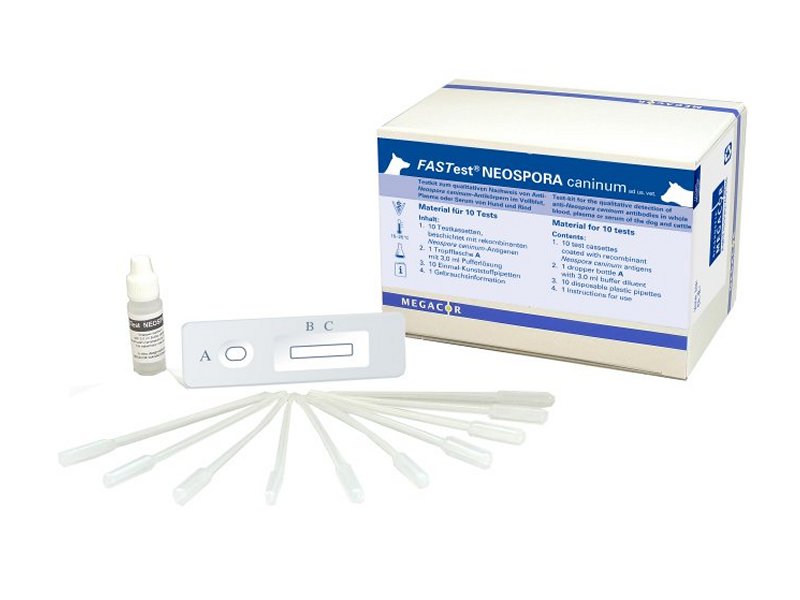Description
Qualitative Detection Of anti-NEOSPORA caninum Antibodies
Test applicable to: Dog, Cattle and Deer
Sample: Whole blood, Plasma and Serum
FASTest Neospora caninum is an immunochromatographic “lateral flow” technique which detects specific anti-Neospora caninum antibodies in whole blood, plasma or serum in dog or cattle.
BBC Countryfile reported that this microscopic menace (Neospora) is quietly infecting livestock and is the most common cause of bovine abortion in the UK. Identified in the 1980’s and recognised as a parasite, this disease now costs the UK an estimated 20 million pounds a year.
Source: BBC Countryfile: 16.02.2014
Neospora caninum is a similar parasite to Toxoplasma gondii. Both diseases share many of the same symptoms, but Neospora caninum can have a more severe impact on the dog’s neurological and muscular system than Toxoplasma gondii.
Dogs are the primary host and excrete the infectious oocysts in their faeces. Animals such as cattle, goats, sheep and horse are intermediate hosts they can contract the illness through grazing or drinking water contaminated with oocysts or via the intrauterine route in infected mothers.
FASTest NEOSPORA Product Information – PDF Download
You may also be interested in FASTest Toxoplasma gondii, follow this link
Why Test?
Why is it important to test for Neospora caninum (dogs)
Neospora caninum is an important epidemiological role in dogs and cattle. It plays an important role in the abortion of cattle worldwide and also can cause severe disease in puppies. Early diagnosis is important in order to give specific treatment quickly and improve the prognosis and also in cattle to stop the spread of abortions.
Symptoms
What are the symptoms of Neospora caninum (dogs)
Signs of this illness are similar to Toxoplasmosis. Any dogs which are less than 6 months old normally suffer from stiffness of the pelvic limbs (back legs), paralysis which then progresses onto rigid contracting of limbs.
Older dogs are likely to suffer from the nervous system being attacked. Symptoms such as tremors, seizures, behavioural changes and even blindness can be present; however other symptoms such as weakness of the cervical muscles and difficulty in swallowing are also a sign of the illness. This paralysis of the muscles can eventually lead to the death of the animal as the infection spreads through their body and affecting their major organs and skin.
Symptoms in Cattle – characteristics
In cattle, characteristics of the disease are abortions in all states of gestation, still births and weak calves.
Instructions For Use
Instructions For Use
FASTest NEOSPORA Instructions For Use


